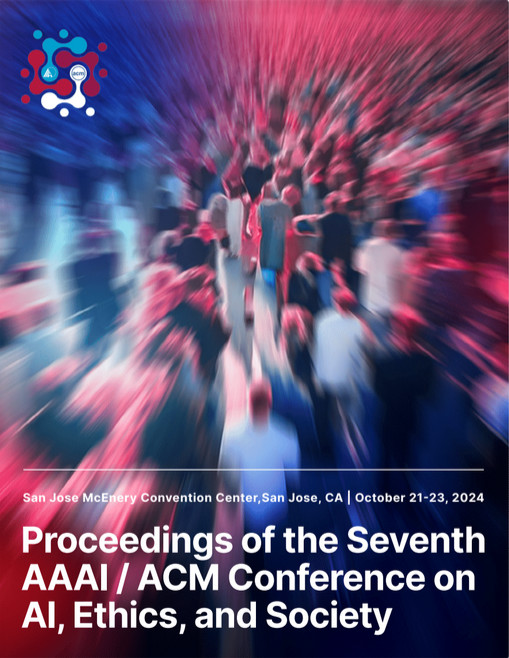Foregrounding Artist Opinions: A Survey Study on Transparency, Ownership, and Fairness in AI Generative Art
DOI:
https://doi.org/10.1609/aies.v7i1.31691Abstract
Generative AI tools are used to create art-like outputs and sometimes aid in the creative process. These tools have potential benefits for artists, but they also have the potential to harm the art workforce and infringe upon artistic and intellectual property rights. Without explicit consent from artists, Generative AI creators scrape artists' digital work to train Generative AI models and produce art-like outputs at scale. These outputs are now being used to compete with human artists in the marketplace as well as being used by some artists in their generative processes to create art. We surveyed 459 artists to investigate the tension between artists' opinions on Generative AI art's potential utility and harm. This study surveys artists' opinions on the utility and threat of Generative AI art models, fair practices in the disclosure of artistic works in AI art training models, ownership and rights of AI art derivatives, and fair compensation. Results show that a majority of artists believe creators should disclose what art is being used in AI training, that AI outputs should not belong to model creators, and express concerns about AI's impact on the art workforce and who profits from their art. We hope the results of this work will further meaningful collaboration and alignment between the art community and Generative AI researchers and developers.Downloads
Published
2024-10-16
How to Cite
Lovato, J., Zimmerman, J. W., Smith, I., Dodds, P., & Karson, J. L. (2024). Foregrounding Artist Opinions: A Survey Study on Transparency, Ownership, and Fairness in AI Generative Art. Proceedings of the AAAI/ACM Conference on AI, Ethics, and Society, 7(1), 905-916. https://doi.org/10.1609/aies.v7i1.31691
Issue
Section
Full Archival Papers

